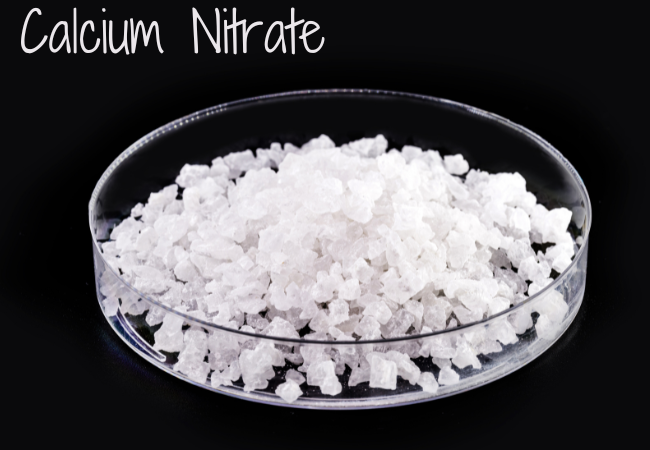Calcium Nitrate with Boron: A Comprehensive Guide for Thriving Crops

Agriculture, at its heart, is about nurturing the soil and ensuring the healthy growth of crops. Among the numerous fertilizers and amendments available, calcium nitrate with boron stands out for its unique benefits. This comprehensive guide will delve into the details of this powerful combination and how it can transform your farming practices.
1. Introduction
1.1 What is Calcium Nitrate with Boron?
Calcium nitrate with boron is a specially formulated fertilizer that combines calcium nitrate, a water-soluble source of calcium and nitrogen, with boron, a micronutrient essential for plant growth. This blend is designed to enhance nutrient uptake, improve soil health, and boost crop yields.
1.2 Importance in Agriculture
In modern agriculture, balancing soil nutrients is crucial for maintaining healthy crops and high yields. Calcium nitrate provides a readily available form of calcium and nitrogen, while boron aids in various plant functions, including cell wall formation and reproductive development. Together, they offer a synergistic effect that benefits both the soil and plants.
2. Understanding Calcium Nitrate
2.1 Chemical Composition
Calcium nitrate, chemically represented as Ca(NO3)2, is a white, crystalline salt that is highly soluble in water. It contains two key nutrients: calcium (19% by weight) and nitrogen (15.5% by weight as nitrate nitrogen), both of which are vital for plant health.
2.2 Benefits in Soil Health
Calcium nitrate plays a crucial role in improving soil structure by promoting the formation of soil aggregates, which enhances soil aeration and water retention. It also helps mitigate soil acidity, promoting a healthier root environment.
2.3 Application Methods
Calcium nitrate can be applied in various ways:
- Foliar spraying: Ideal for rapid nutrient absorption.
- Soil application: Directly mixed into the soil to provide sustained nutrient release.
- Drip irrigation: Ensures efficient and targeted nutrient delivery to the root zone.
3. Understanding Boron
3.1 Chemical Composition
Boron is a trace element typically found in soil in the form of boric acid or borate minerals. Despite its low concentration in the soil, it is critical for plant development.
3.2 Role in Plant Growth
Boron is essential for:
- Cell wall formation: Provides structural integrity to plants.
- Sugar transport: Facilitates the movement of sugars and other carbohydrates.
- Reproductive health: Vital for pollen tube growth and seed development.
3.3 Application Methods
Boron can be applied:
- As a soil amendment: Directly incorporated into the soil.
- Through foliar sprays: Useful for correcting deficiencies quickly.
- In irrigation water: Ensures even distribution and uptake.
4. The Synergy of Calcium Nitrate and Boron
4.1 Enhanced Nutrient Uptake
When combined, calcium nitrate and boron facilitate the uptake of each other and other essential nutrients. This synergy ensures that plants have access to the nutrients they need for optimal growth.
4.2 Improved Plant Health
This combination enhances root development, strengthens cell walls, and improves overall plant vigor, making crops more resilient to pests and diseases.
4.3 Soil Interaction Dynamics
Calcium nitrate and boron work together to improve soil structure and nutrient availability. Calcium helps neutralize soil acidity, while boron ensures the proper functioning of plant metabolic processes.
5. Benefits of Using Calcium Nitrate with Boron
5.1 Increased Crop Yield
Studies have shown that the use of calcium nitrate with boron can significantly increase crop yields by enhancing nutrient uptake and improving plant health.
5.2 Enhanced Fruit Quality
This combination improves fruit firmness, size, and shelf life by strengthening cell walls and promoting proper nutrient balance.
5.3 Improved Soil Structure
Regular use of calcium nitrate with boron helps build soil structure, enhancing aeration and water retention, which are critical for healthy plant growth.
6. Application Techniques
6.1 Foliar Application
Foliar sprays allow for the rapid absorption of nutrients, making them ideal for correcting deficiencies and providing a quick nutrient boost during critical growth stages.
6.2 Soil Application
Incorporating calcium nitrate with boron into the soil ensures a steady supply of nutrients. This method is particularly effective for long-term soil health and nutrient availability.
6.3 Drip Irrigation
Using drip irrigation systems allows for precise nutrient delivery, minimizing waste and ensuring that plants receive the right amount of nutrients directly at the root zone.
7. Recommended Dosage
7.1 General Guidelines
The general recommendation is to apply 1-2 kg of calcium nitrate with boron per hectare, depending on soil conditions and crop needs. It’s important to adjust the dosage based on soil tests and crop requirements.
7.2 Crop-Specific Recommendations
Different crops have varying nutrient needs:
- Vegetables: 1-1.5 kg/ha
- Fruit trees: 2-3 kg/ha
- Field crops: 1-2 kg/ha
7.3 Seasonal Variations
Nutrient needs can vary throughout the growing season. It’s essential to adjust applications based on growth stages, with higher rates during periods of rapid growth and fruiting.
8. Potential Issues and Solutions
8.1 Overapplication Risks
Overapplication can lead to nutrient imbalances and toxicity. Symptoms include leaf burn and reduced plant growth. Regular soil testing helps prevent overapplication.
8.2 Symptoms of Deficiency
Signs of deficiency include:
- Calcium deficiency: Blossom end rot, weak stems.
- Boron deficiency: Brittle leaves, poor fruit set.
8.3 Balancing Soil pH
Both calcium nitrate and boron can influence soil pH. It’s crucial to monitor soil pH and adjust with lime or sulfur as needed to maintain optimal levels.
9. Comparing with Other Fertilizers
9.1 Calcium Nitrate Alone
While beneficial for providing calcium and nitrogen, it lacks the essential micronutrient boron, which is critical for plant reproductive health and growth.
9.2 Boron Alone
Boron alone is insufficient as it does not provide the macronutrients necessary for overall plant health and growth, such as nitrogen and calcium.
9.3 Other NPK Fertilizers
NPK fertilizers offer a balanced mix of nitrogen, phosphorus, and potassium but often lack micronutrients like boron, making calcium nitrate with boron a more comprehensive solution for specific needs.
10. Case Studies and Real-World Applications
10.1 Successful Case Studies
Farmers in various regions have reported significant yield increases and improved fruit quality after switching to calcium nitrate with boron. For example, tomato growers have noted firmer fruits and fewer instances of blossom end rot.
10.2 Lessons from Failures
Some farmers have faced issues due to overapplication or incorrect timing of applications, leading to nutrient imbalances and poor crop performance. These cases highlight the importance of proper dosage and application timing.
10.3 Expert Opinions
Agricultural experts recommend regular soil testing and tailored application strategies to maximize the benefits of calcium nitrate with boron while minimizing potential risks.



